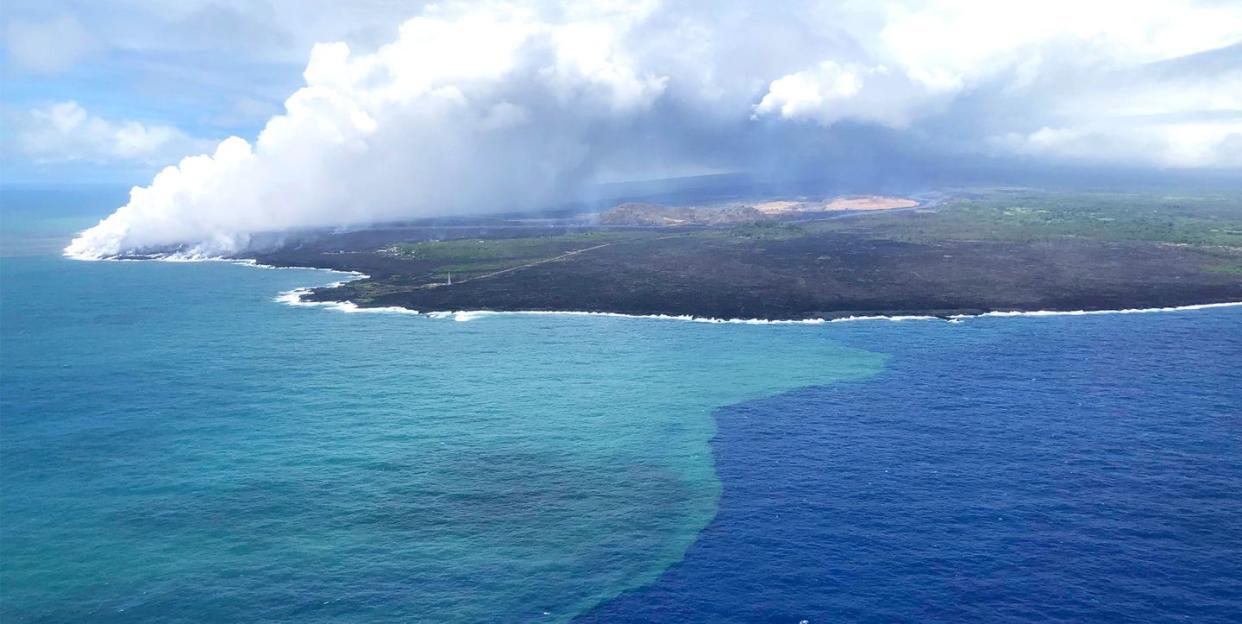Turns Out Something Good Came from Kilauea’s Historic Eruption

Molten lava that poured into the ocean during the Hawaiian volcano Kilauea’s 2018 eruption kicked off a massive algae bloom.
Unlike harmful red algal blooms, green algae forms the base of the ocean food chain and promotes growth in marine ecosystems.
Half of the world’s oxygen supply comes from algae, or phytoplankton.
Kilauea volcano’s 2018 eruption devastated Hawaii. Lava tore through neighborhoods and farms, destroying more than 700 homes and covering 13 square miles of land in slabs of dark volcanic rock. But when that lava poured into the ocean, it spurred a massive bloom of planktonic algae, or phytoplankton, which stretched hundreds of miles out into the Pacific Ocean.
So at least something good came from the destruction.
NASA satellites gave the phytoplankton away. Scientists studying the images noticed that the waters around Hawaii’s Big Island took on a greenish hue as lava poured into the sea, so they set out to investigate. When the researchers tested the waters, they found a number of natural fertilizers including iron, silicic acid, phosphate and high levels of nitrates, according to a study published today in Science.
"There was no reason for us to expect that an algae bloom like this would happen," geochemist Seth John, assistant professor of Earth sciences at USC Dornsife and an author of the study, said in a press release. "Lava doesn't contain any nitrate."
John and his colleagues believe the massive influx of piping hot lava into the ocean forced cold water to rise up from the deep ocean, bringing nitrogen and other fertilizing nutrients with it.
Green algae—different from harmful red algae—plays a vital role in the ocean ecosystem. It forms the base of the ocean’s food chain and is an important food source for zooplankton, fish, and crustaceans, which are quickly gobbled up by larger ocean-dwellers like sharks, seals, whales, and, of course, humans.
This isn’t the first time that volcanoes have spurred life in the oceans. A 2008 eruption in Alaska’s Aleutian Islands triggered a nearby algal bloom that revived ailing salmon populations.
Scientists suspect there may be another benefit to the bloom: These microscopic marine plants also eat up carbon dioxide from the atmosphere and supply more than half the world’s oxygen.
You Might Also Like

